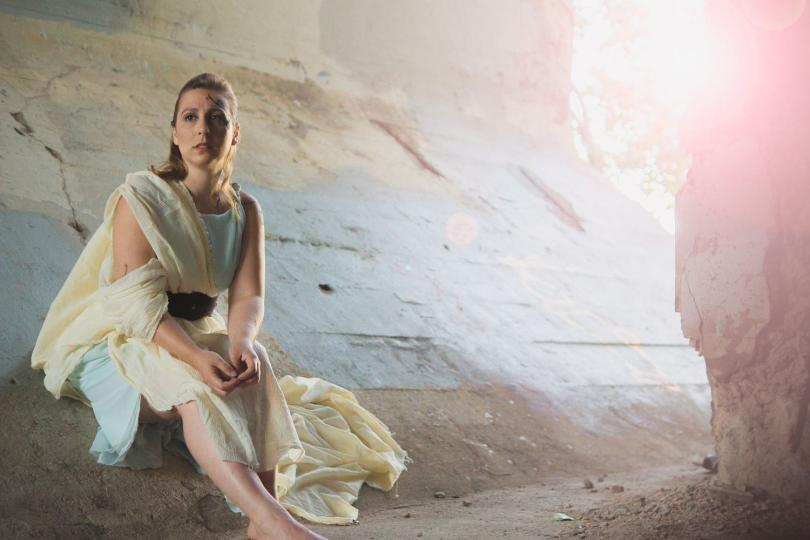Form of resistance

Since it was written in around 441 BC, Sophocles’s Antigone has been adopted by just about every major human rights cause you can think of. At least one entire book is devoted to twentieth-century adaptations of the play: in Antigone on the Contemporary World Stage, by Erin B. Mee and Helene P. Foley, we can find Antigone resisting colonial oppression in Ireland, asserting the cultural legitimacy of the Creole language in Haiti, practicing Falun Gong in China, commenting on human rights in Turkey, and exploring the role of women in war-torn Damascus. Recently, a staged reading of Antigone starring Samira Wiley made the news – it was held in Ferguson, where Michael Brown’s body lay in the street for over four hours in 2014.
It is easy to adapt a play that is over 2000 years old. It has lasted long enough to be considered “universal” by those who connect to the European literary tradition, and there are no copyright laws to infringe on or royalties to pay. I don’t find anything inherently objectionable to the idea of using Antigone to encourage audiences to think differently about an issue – but at the same time, it is refreshing to see an adaptation that doesn’t try to impose an overt political ideology on the play.
Powerful resistance
Meagan Kedrowski, who has adapted and directed the play for Theatre Coup d’Etat, has realized that when done well, Antigone is quite political enough on its own. Her script and staging certainly highlight the politics behind the play, but she lets the characters speak for themselves, without being heavy-handed about drawing modern-day parallels. And in remaining faithful to the characters’ own voices, Theatre Coup d’Etat brings out one of the play’s most important arguments: that state power traffics in symbolic acts, and focusing on the value of individual lives and stories can represent a powerful form of resistance.
The disconnect between human empathy and state power is a common thread throughout the script, but this tension comes through in the staging as well. Kedrowski has chosen to stage events that occur off-stage in Sophocles’ original, such as the fight between Polyneices and Eteocles or Antigone’s entombment in the cave. With the help of Adam Scarpello’s fight choreography and some well-placed flashbacks to Antigone’s childhood, Kedrowski’s highly physical staging brings the emotional stakes of the play to life in a way that would have been less successful in a “talkier” adaptation.
It is a risk to inject psychological realism into a play written millennia before the concept was in vogue. But it works here because it serves Antigone’s purpose: to stand up to abuses of power through reminders of kinship, shared history, and humanity.
Excellent cast
Kedrowski has also brought together an excellent cast to bring her vision to life. It is particularly notable that they are staging the play in a very acoustically live space at the SpringHouse Ministry Center, and I had no trouble understanding anything the actors were saying. Their diction was amazing, and none of the script’s emotional impact was ever sacrificed.
Speaking of the space: the church is beautiful, and it is a particularly apt setting for a play about the sanctity of the human body. Despite my not being a Christian (and this play not belonging to the Christian tradition), I thought the fact of being in a church added an extra sense of gravitas around the brothers’ burials and the need for communal recognition of the value of a life. The space was also lit very effectively, including some wonderfully long night-time shadows – a particular feat given the minimal equipment and inconvenient angles across the thrust-style stage (no lighting credit is given in the program).
As Antigone and Creon, Lauren Diesch and Brian Joyce deliver well-calibrated, richly imagined performances; in the debate between individual morality and the laws of the state, the two actors make it hard to fall entirely on one side or the other. But this is truly an ensemble production, from Jeff Groff’s moving performance as Haeman right down to the welcome comic relief from the four palace guards (Kelly Nelson, Franklin Wagner, Patrick Webster, and Antonia Perez). And even the guards provide nuance to the play’s argument, since in the face of their king’s brutal edict, none of them ever want to take responsibility for anything.
Just one question
I had just one question about the adaptation, and that is in its portrayal of Ismene, Antigone’s sister, at the end of the play. To my mind, characterizing Ismene as cowardly may be giving short shrift to other forms of resistance, to bearing witness or to playing the long game when it comes to working towards change. But this may just be a tribute to Coup d’Etat’s work: if the production was not so effective at opening avenues for discussion, I would not even be asking the question.
Kedrowski’s vision of Antigone is both direct and deeply nuanced, neither dumbed down nor overly cerebral. Under the vaulted ceiling of a church, with minimal props and audience members seated on three sides of the action, the company tells Antigone’s story in perhaps the most vibrant and unmediated way possible. In doing so, they clear the way for interpretation and reflection without imposing a dogmatic path forward. Maybe this shouldn’t seem so revolutionary – but these days, any resistance to dogma feels like a welcome breath of fresh air.




